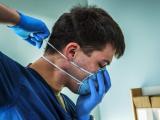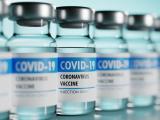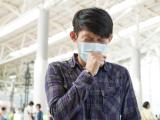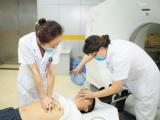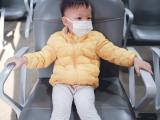Oct 7, 2003 (CIDRAP News) – A study of 25 children who were hospitalized in Toronto for possible SARS (severe acute respiratory syndrome) suggests that the disease is generally milder in children than in teens and adults.
"Our results suggest that SARS is a relatively mild and nonspecific respiratory illness in young children," say Ari Bitnun, MD, and colleagues from the Hospital for Sick Children at the University of Toronto, writing in the October issue of Pediatrics.
They report that the disease was difficult to distinguish from other common respiratory infections such as respiratory syncytial virus (RSV) and influenza. And because some children who probably had SARS experienced no cough or breathing difficulty, the authors suggest that the World Health Organization (WHO) case definition for SARS in children needs revision.
In the prospective study, the researchers enrolled children who were admitted to the hospital with suspected SARS between mid-March and mid-June of this year. Twenty-five children (median age, 2.25 years) met the criteria for a suspected case on the basis of fever and a history of potential exposure to SARS within 10 days before the onset of symptoms.
During hospitalization, children were classified as having probable SARS if they had radiographic signs of lower respiratory tract disease or evidence of a severe progressive respiratory illness and if no other causative agent was found. Children remained in the "suspect case" category in the absence of radiographic changes or identification of another pathogen. On this basis, 10 children had probable SARS, 5 had suspected SARS, and 10 had other causes of illness, including influenza A, adenovirus, parainfluenza, RSV, and others.
The clinical findings for the SARS and non-SARS cases differed little, the researchers found. Fever was the initial sign in 7 probable SARS cases, 5 suspected cases, and 9 of the 10 other illness cases. The illnesses were mild and brief for most of the children. Only one patient, a 17-year-old girl with probable SARS, experienced respiratory distress and needed oxygen supplementation.
For 8 of the 10 probable SARS patients, relatively minor alveolar infiltrates were the main radiographic abnormality. The 17-year-old girl had progressive lower lobe infiltrates. Abnormal lab findings such as lymphopenia, thrombocytopenia, and elevated liver transaminase levels were about as common in the SARS cases as in non-SARS cases and were generally mild.
Reverse transcriptase–polymerase chain reaction (RT-PCR) was used to test nasopharyngeal samples for the SARS coronavirus; the results were negative for all 25 children. The authors speculate that the test may have had poor sensitivity in the setting of mild disease with a low viral load or that the SARS virus may remain in the upper airway only briefly.
Two of the children classified as having probable SARS never had respiratory symptoms—cough or breathing difficulty—and only 6 of the 10 "probable" patients ever had a cough, the report says. Consequently, the authors suggest revising the WHO SARS case definition for children by dropping the requirement for respiratory symptoms to qualify as a suspect case and dropping the requirement for progressive respiratory disease or radiographic abnormalities to qualify as a probable case. "Our results suggest that, in children, the presence of fever in conjunction with an appropriate exposure history should lead one to consider the possibility of SARS," the report says.
The investigators say their observations and previous evidence suggest that children pose a lower risk of spreading SARS than adults do. "In our institution [a children's hospital], no health care workers contracted SARS, and, as far as we know, there has been no documented transmission of SARS to health care workers from children," they write.
The main limitation of the study was its reliance on clinical and epidemiologic findings to assess the likelihood of SARS, the authors say. Lacking a reliable serologic test for SARS, they couldn't be sure they classified all the cases correctly. But they say the soundness of their classification method is supported by the fact that most of the children with the strongest epidemiologic links to SARS were ultimately classified as having probable cases.
Bitnun A, Allen U, Heuter H, et al. Children hospitalized with severe acute respiratory syndrome-related illness in Toronto. Pediatrics 2003;112(4):261-8 [Full text]
